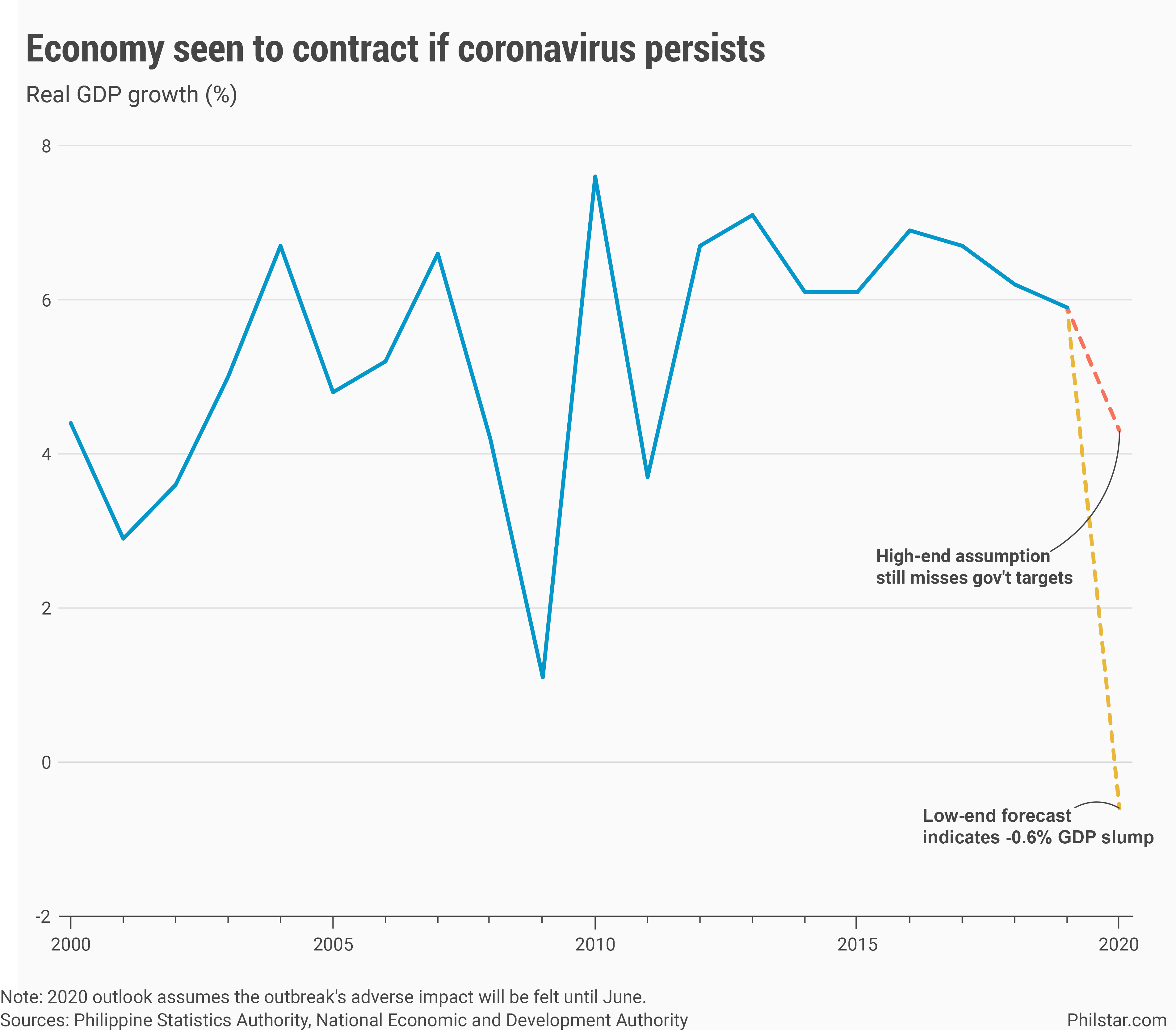Economy may contract this year due to COVID-19, quarantine impact

MANILA, Philippines — More than a million Filipinos will be left jobless as the economy is poised to contract under a worst-case scenario of the coronavirus outbreak left to spread without mitigating measures, while a Luzon lockdown battered businesses, government economists projected on Tuesday.
The good news is economic measures seemed to be underway and economists are one in saying that policymakers can still save the economy from a steep decline or posting its worst growth in nearly a decade.
In a report released Tuesday, the National Economic and Development Authority said the economy is likely to slump by as much as 0.6% by year-end or grow only by as much as 4.3%, still falling below the government’s 6-7% target this year.
At any point, the deceleration in the economy would mark its slowest pace since 2011 under the best-case scenario of 4.3% growth, or its worst performance in record dating back 1986, even beating the 1.1% growth posted during the global financial crisis in 2009.

“The government’s swift and appropriate response remains crucial in softening the blow of COVID-19, particularly on the most vulnerable members of our society,” the report stated.
In current prices, the economic damage from COVID-19, projected to last until June, is between P428.7 billion and P1.36 trillion, equivalent to 2.1 to 6.6% of gross domestic product (GDP), forecasts showed.
Job losses
In terms of jobs, the month-long enhanced Luzon community quarantine, which would last until April 12, is seen to single-handedly cost the jobs of 1.8 million people, an indication of the island’s massive 73% share on GDP as of 2018.
By sector, transport and tourism would suffer biggest job losses between 33,800-56.600, data showed. Consumption followed, as closure of retail businesses impact the jobs of up to 62,500 people. The export sector is bound to suffer up to 6,700 job losses.
“It also bears emphasizing that attaining the upper-bound of 4.3% growth rate for 2020 is possible only if we are able to stem the impact of COVID-19 and the enhanced community quarantine to the rest of the economy,” NEDA said.
Absent any fiscal stimulus, the outbreak would still prompt the government to spend more and “can increase the national government budget deficit to 4.4-5.4% of GDP,” higher than last year’s 3.5% and way above this year’s 3.2% cap.
That said, NEDA said it is more important that contingency measures are laid out. Among others, it cited the need for a “public health response” that focuses on providing necessary equipment, as well as ensuring public transport for them while the entire Luzon is on lock down.
Supporting small businesses and “rebuilding” consumer confidence should also be prioritized post-outbreak, NEDA said.
“The COVID-19 crisis appears to involve a class dimension: at the onset, the upper- and middle-income classes are the ones directly infected because they are the ones who travel or are acquainted with ones who have travelled,” NEDA said.
Sought for comment, Cid Terosa, economist at University of Asia and the Pacific, said the government may need to borrow more funds to fully finance the economic costs of the outbreak. "I'd say the government can cover 40-50% of the damage," he said in a text message.
- Latest
- Trending




























